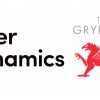Canada Day 2022 has arrived and we think it makes sense to focus today on one of the great brands that has defined Canadian high-end audio for five decades. Products like the PSB Synchrony B600 prove that you don’t have to spend more than $2,799 for a reference quality pair of loudspeakers. Bookshelf speakers are very big right now. People hate that I use that word.
Having been admonished recently by several readers who objected to my usage of the phrase “bookshelf loudspeakers” when suggesting a number of models for our “Best Bookshelf Speakers” 2022 Guide, I took the criticism to heart. Many of the models I recommended should be called “stand-mounted” speakers for the simple reason that they won’t work very well on a bookshelf. The PSB Synchrony B600 are one of the best sounding stand-mounted loudspeakers I’ve ever heard, and I would never suggest sticking these on any bookshelf.
I’ve now abused the aforementioned term far too much in one paragraph and it should be considered banished for the remainder of the review.
PSB is a fascinating company for several reasons and I’m going to admit that I felt a degree of hometown pride reviewing it.

Paul Barton didn’t start the Canadian brand in Toronto, but it’s the best known from the 416 and 905 area codes (sorry Paradigm) and after almost 50 years, it has earned the right to take a bow.
PSB was started by Paul Barton when he was in high school, and it was a labor of love for him all through his college years in Ontario. He would attend classes during the day and work on designs well into the evening.
2022 is the start of PSB Speaker’s 50th year and there are very few loudspeaker companies that can make that claim; the understated nature of its success is both a Canadian trait and what makes Paul Barton such a valuable resource to learn from.
There is no voodoo science or pseudo-engineering behind any PSB loudspeaker; prototypes are put together and measured over and over until the engineering team is happy with what they have and then the listening begins. And it’s a slow methodical process that doesn’t lead to a product refresh every year.
PSB is also a very important cog in the Lenbrook Group that includes NAD, DALI and Bluesound; the combined financial and engineering resources of the three companies gives Paul Barton the freedom to create.
What’s even more fascinating about that access to resources is that Paul Barton has refused for almost 50 years to deviate from his core belief of designing loudspeakers that people can afford.
At this point in the game, he could bring $10,000, $20,000, or even $100,000 speakers to market but he has no desire to do so.
He doesn’t understand how that would benefit PSB or consumers who want better sound quality at home but can’t afford some of the stratospheric designs currently available.
It’s a wise mentality and one that explains the overall success of the 3 brands that Barton is involved with. Those wireless Bluesound speakers on your deck? Take a wild guess who designed those.
All of those new Bluesound and NAD Network Amplifiers? PSB uses all of them in the design process.
Having owned more than a few pairs of PSB loudspeakers over the past 30 years, I am admittedly biased. I started with a pair of PSB Stratus Gold and I’m currently listening to a pair of Alpha P5 as I compose my thoughts.
The Future of PSB
The PSB Synchrony B600s are a rather complex design and I decided to go right to the source for a better understanding of the design; and that of the new Synchrony T600s as well. The Synchrony Series represent both a huge leap forward for PSB and a new partnership with IsoAcoustics.
Disclaimer: I was asked to be the Host and Moderator of the PSB Synchrony Launch on YouTube. I had listened to the Synchrony B600s for 2 months prior and they have since moved on to another reviewer. I received no compensation for my appearance.
Dave Morrison, CEO, of IsoAcoustics, was very kind to join us and participate in the official launch of the Synchrony Series that incorporate his acoustic isolation products.
I would advise watching the entire video as there is a Q&A at the very end with both Paul Barton and Dave Morrison that is very informative.
The B600 utilize the same all-new driver platform as the flagship Synchrony T600 towers in a 2-way bass reflex design, that includes a 6.5” woofer with cast aluminium basket, woven carbon fibre cone and rubber surround, and a 1” titanium dome tweeter with Ferrofluid and Neodymium magnet.
Heavily braced MDF cabinets with aluminum-clad front baffles provide maximum rigidity and density to reduce “baffle talk” around the drive frame. A rear-firing port regulates air compression in the cabinet.
IsoAcoustics isolators are integrated directly into the B600 cabinet. The patented isolators provide a high degree of isolation and provide a secure, stable and non-resonant connection with the supporting surface.
This is the most advanced amplitude-perfect Linkwitz-Riley 4th order crossover that PSB Speakers has ever utilized, featuring high-voltage poly film capacitors and oxygen-free interconnect wire for complete driver control.
Getting Started
The Synchrony B600 are heavy stand-mounted loudspeakers and I would advise spending the extra money on the stands that were developed for them. You can use your own (I also used my 24″ welded iron GHA stands filled with sand) or place them on a credenza or media unit.
I listened to the PSB Synchrony B600 in two different rooms; my 16′ x 13′ x 9′ den and 33′ x 13′ x 9′ basement office that features heavy Berber carpeting and no windows.

My den is a more likely environment for the B600s but it’s not ideal as it features two openings on opposite walls to our front hallway and kitchen. It also features a hardwood floor with a 12′ x 9′ area rug and only a few pieces of furniture.
It’s a much livelier listening space that is normally occupied by a pair of Magnepan LRS or Q Acoustics 3050i loudspeakers.
The PSB are rear-ported and I would strongly advise pulling them a few feet from the wall as their bass output is anything but anemic.
I did play around with toe-in but I found the tonal balance to be slightly warmer with the speakers only angled a modest amount towards my listening position. I listened from 9′ away to the front of the drivers.
I would also keep them a few feet from the side walls to improve the soundstage and overall clarity.
Unlimited Power
In my experience, PSB speakers prefer more power than less. The B600’s 88 dB (4 ohms) sensitivity rating might be slightly optimistic but not by much. They are not difficult to drive at all but my experience with different types of amplification made it very clear that they prefer 100 watts/channel and certainly not from a mass market AVR.
I listened using my Cambridge Audio Edge A, Schiit Audio Ragnarok 2, NAD C 316BEE, Audiolab 6000A, and the Vincent SV-737 that I just reviewed.
The Edge A and SV-737 were the best combinations for a few reasons; power, midrange warmth, and degree of control in the bass.
The Audiolab 6000A is a gutsy little amp but the tonal balance is completely wrong for the B600s; its razor-flat tonal balance was downright boring with the utterly transparent PSB speakers and I couldn’t imagine liking this combination for more than a few tracks.
It also didn’t have the control required in the bass to really experience what the B600s can deliver.
The Vincent SV-737 has a rather potent low end but it doesn’t posses the same degree of control as the Edge A. It’s still a great option for these speakers.
The Schiit Ragnarok 2 was wonderful from the midrange up but really soft in the bass and it definitely ran out of gas before the other two integrated amplifiers.
My advice?
100 watts at a minimum and with a slightly tilted tonal balance that favors some warmth in the midrange and not a bright sounding treble. A strong grip in the lower registers is a must. Bryston might be ok if not slightly cool sounding.
The Cambridge Edge A was almost perfect sonically but it’s also $3,500 more than the price of the PSB speakers so not ideal from that perspective. The Vincent might be the second best option and it’s only $1,000 more than the speakers and a really well made amplifier.
Music
I run a pair of PSB Alpha P5 on a set of IsoAcoustics stands in my office and I definitely hear a difference with the speakers placed directly on the top of my inverted IKEA Kallax unit that holds records as well.
The imaging on the IsoAcoustics stands is more precise and the sound is definitely more transparent sounding. You lose some midrange warmth in the process but you can alter that with different amplifier.

The Synchrony B600s on the integral IsoAcoustics feet were rock solid performers on my inverted IKEA Kallax unit in my office. I expected to feel some vibration on the top surface of the unit as I raised the volume and drove the B600s hard but it was never really an issue.
When I placed the speakers on the stands, the value of the IsoAcoustics isolation footers was quite evident.
One of the most surprising things about the PSB Synchrony B600s was its bass response.
I’ve been listening to a lot of Tool during the pandemic; because it is such happy music and I really needed something to pick me up after my first case of COVID.
Lateralus (Qobuz, 24-bit/96kHz) and Undertow (Qobuz, 24-bit/96kHz) are heavy albums and you have to be in a certain mood to get lost in tracks like “Sober” which were not crafted as background music.
I honestly expected the B600s to bottom out rather quickly as I raised the volume but imagine my surprise when they just kept pounding straight ahead with authority.
Bass response and scale are a big part of their presentation and I begrudgingly turned the volume down when my family appeared carrying pitchforks and knives.
My kids are from the Jersey Shore. Feel for me.
The bass response is tight, resolute, and very well defined with every genre of music; I really enjoyed listening to Aphex Twin, Kraftwerk, Daft Punk, and Boards of Canada through these speakers.
Music Has The Right To Children (Qobuz, 16-bit/44.1kHz) is more trip hop but I enjoy the digital stream and vinyl version for its brilliant atmospherics. “Telephasic Workshop” sounded absolutely enormous through the B600s with the sound extending well beyond the edges of both cabinets.
“Gemini” from Tomorrow’s Harvest (Qobuz, 24-bit/44.1kHz) washed over my listening space and I was quite surprised by how well the PSB loudspeakers handled trip hop, electronica, and other EDM releases.
Spacious, detailed, and incredibly transparent sounding with almost every recording from the genre that I threw at it.
Jazz and classical fans will love the Synchrony B600s for their transparency, detail, and drive.
Donald Byrd’s “Cristo Redentor” gets played through everything in my home and while the B600s didn’t deliver the track with the hair-raising transparency of my Magenpan LRS, it came damn close and with a much larger presence as well.
I’m not sure I would call the midrange of the B600s “warm” but it is certainly not perfectly neutral either. There is definite body there and I could easily tell the differences between the Edge A and Vincent SV-737; the German integrated amplifier has a warmer tonal balance than its $6,000 British rival and I really preferred the slightly rolled-off treble with the PSB speakers.
It’s a Small World After All
Just not through the PSB Synchrony B600s.
Perhaps one of the most impressive aspects of its sonic performance was the overall sense of scale with almost every piece of music.
Don’t tell the PSB speakers that they are a stand-mounted 2-way design because they sound like much larger floor standers with the bass response to back it up.
Do you need a subwoofer with these loudspeakers? Not on your life.
Under Pressure
Listening to vocals through the Synchrony B600s was a joy; even though I would have preferred slightly more body if I’m going to nitpick.
Nobody is going to confuse this loudspeaker with a Harbeth, Spendor, or pair of ProAcs but I think Paul Barton has delivered a loudspeaker that is somewhat of a blank canvas.
It will respond with what you feed it; both in terms of equipment and music.
I would love to try them again with an EL34 or E84 tube amplifier with some power behind it. I suspect the combination would be mesmerizing.
$2,799 for these is a downright steal. I’m actually puzzled where they cut corners to make it this affordable.
Conclusion
If I had only $2,799 to spend on a pair of loudspeakers in 2022 (plus $599 for stands), I would be very hard pressed to create a list that did not include the PSB Synchrony B600s.
Paul Barton has created a very clean sounding loudspeaker; one that is never boring or etched sounding when pushed, and very easy to fall in love with if you get the amplifier right.
I think that’s the key with these speakers. Find a powerful amplifier that melts your soul and see how it fares with the B600s. You might not want to stop listening.
I would not be surprised to see a NAD amplifier inside the next generation of Synchrony loudspeakers and what a fascinating active loudspeaker that might prove to be.
Where to buy: $2,799/pair at Crutchfield in walnut or black. Also available direct from PSB. The matching stands (model PSB SST-24) are $599/pair at Crutchfield.

































Gordon Metcalfe
October 9, 2021 at 12:03 am
Why isolate speakers from the floor? Bone conduction is a significant part of the bass experience. In my case, from the floor standing speakers through the suspended wood floor into the couch, into my body. The increase is notable when one sits back on the sofa, maximizing body contact with the furniture. To me this stuff is just more marketing gimmicks. Likewise for numerous of the audio accessories on the market. And don’t get me started on 1000/ft “hi-fi” cables.
Ian White
October 9, 2021 at 2:52 pm
Gordon,
I asked that question offline during the Synchrony YouTube launch. If memory serves (I’m just getting over COVID so the headaches have been severe), vibrations move in both directions (both from the speaker and from the floor upward into the stands and cabinet) and isolating the cabinets from the stands reduces the impact of the vibrations on the cabinet while the speaker is playing.
I’m with you 10000% on cables.
I’ve used the IsoAcoustics products for a few years and their impact is something that you notice almost right away. I don’t think you need to go crazy with $$$$ isolation platforms but the $150 speaker stands really do change the sound; not always for the better.
I’ve placed them under $150 bookshelf speakers and $5,000 stand-mounted speakers and in every single case — the speaker sounds clearer, more transparent and detailed. I didn’t always like the change.
Bass is definitely tighter and leaner sounding.
I’ve also tried their isolation platform for subwoofers and it’s an interesting change; bass is tighter and more detailed but you do lose some of the visceral impact. If you have a room issue where you want to reduce some of the excess bass energy in the corners — it’s a very effective solution.
Ian White
Steven O'Farrell
January 11, 2022 at 2:14 pm
Although I have never owned a pair of PSB speakers, on the few occasions when I’ve had a chance to listen to them, I more often than not come away thinking that they get the essentials right better than many speakers anywhere near their price.
Even their lower end Alpha series delivers audio quality that many people would be wowed by so it stands to reason that Barton could get a whole lot done with a bigger budget and fewer contraints – value being this companies calling card if you will.
As far as cables are concerned, I’m perfectly happy with well designed, reasonably priced products from ethical companies that care about delivering good value to their customers. Some of the absurd prices of audio cables can give a jolt of sticker shock far beyond most anything you could think of, luxury cars and jewelry included! Forget the mumbo jumbo and trust your ears is always a good bet.
Would I be interested in your opinion of cables that the budget conscious audiophile might be able to afford and that would prove beneficial audio wise? I would be, if only because I enjoy your reviews and respect your opinion but by the same token would understand why you might be reluctant to get into a subject that elicits so much debate and such diverse, passionate opinions – both pro and con. It’s a dicey topic, Ian!
Ian White
January 11, 2022 at 3:38 pm
Steven,
I appreciate your kind words and that you read my review. I’ve been a PSB customer since the Stratus Gold (regret selling those) and I take some hometown pride that PSB is a Toronto company (even though I’ve lived in NJ for more than 20 years). I own a pair of PSB Alpha P5 loudspeakers and think they represent tremendous value for the money.
Cables are not a scary topic. Maybe.
I’ve owned cables from at least 15 brands since 1995 and with the exception of the Nirvana SL (no longer in business), I think $$$$ cables are a huge waste of money. I won’t call it fraud, but I’ve tried some $$$$ cables over the years that did very little to impress.
QED, Audio Art, Kimber (entry-level) and Analysis Plus are my go-to cables at home. I own a few AQ cables near the bottom of their range and they’re perfectly fine. Spending more than $150 on a digital cable is insanity. Analysis Plus makes excellent cables. The Oval speaker cables in my system are 15 years old and I have zero need to change them.
QED is a surprising find. They are not expensive and I use rather long runs of their speaker cable in my bedroom, dining room, and office systems. They are very neutral sounding cables. I would almost call them slightly on the analytical side.
Audio Art is also a good company. Rob Fritz is a solid guy and his copper cables work well in most systems.
I will confess to using Audio Art power cables in every system. They do make a difference with amplifiers. I didn’t find the uptick with source gear as big.
Best,
Ian White
Sorrel
January 5, 2022 at 6:11 pm
Hi, Ian. You mentioned that you listened to the B600s using a NAD C 316BEE integrated amplifier. Could you share your thoughts about the 316BEE and B600 combo. Thanks!
Ian White
January 5, 2022 at 7:13 pm
Sorrel,
Not terrible in terms of the tonal balance but not enough power. I really love the C 316BEE V2 and use it in my bedroom system but it doesn’t have the grunt to drive the B600s.
I watched a video review of the B600s with the Audiolab (which I also own) and was utterly perplexed by that unless the person listens at much lower volume levels.
The B600s need a Class A/B amplifier with 80-100 watts at a minimum and I would go with a warmer tonal balance in regard to the amplifier.
NAD makes a few of those that are a lot more money than the C 316BEE V2.
I spoke to Paul Barton about it and he was rather adamant that the B600s need a lot of power.
They are exceptional speakers for the money.
Ian White
Sorrel
January 8, 2022 at 3:18 pm
Thanks!
Donn Rutkoff
August 16, 2022 at 7:04 pm
Elac has a new Solano with the jet5 amt, $2k a pair. triangle comete 40th anniv. $2800 pair. any comments re: comparing these to the PSB? I listened a few minutes to the comete and very impressed, even tho I am mostly a “ribbon” or quad stat kind of guy. any input appreciated. My room setup is for bookies and a sub. I have my vinyl LPS in a pair of cabinets that make excellent stands, 34″ high and any distance I want from back wall.
Ian White
August 16, 2022 at 9:03 pm
Donn,
I have not heard either the ELAC or Triangle yet, so I really can’t comment. I’ve heard other speakers from both brands and liked them a lot but I don’t know how those two speakers compare to the B600s.
Best,
Ian White
Gerald
September 18, 2022 at 1:34 pm
Hi Ian,
Would the naim uniti atom have enough power to drive the psb, I use it with my monitor audio gold at 4 ohms and 86 db.
Thanks
Ian White
September 18, 2022 at 2:36 pm
Gerald,
Yes but it really depends on the room size and volume levels.
I had already sent my Uniti Atom back to another reviewer before the B600s arrived and I found that they needed 80 watts of class AB to really open up. The bass response is a huge feature of these speakers and the Uniti Atom doesn’t have the kind of control to show that off.
Best,
Ian White